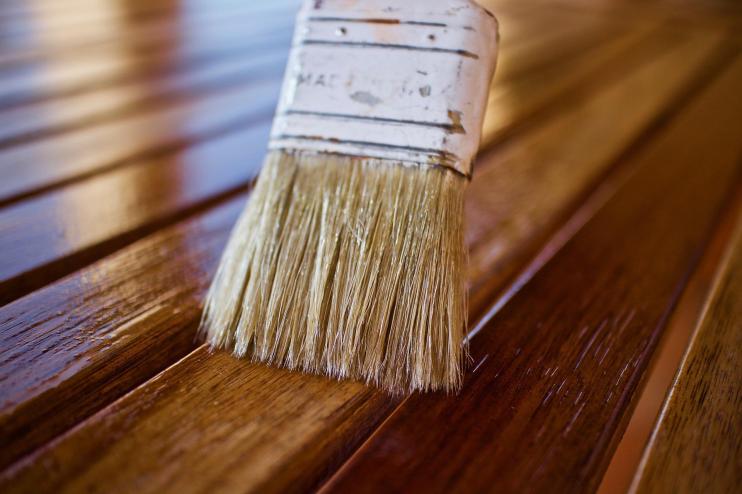
The cost of living crisis is adding pressure to many household budgets, meaning many are cutting back costs as much as possible. As a result, expensive home improvement and renovation projects that aren’t essential may have to be put on hold.
Over the course of the pandemic demand for home improvements soared and costs have spiralled – largely due to the cost and availability of materials and tradespeople upping prices as a result.
However, if you have essential home improvement work or simply can’t face looking at those same four walls any longer, Which? has found ways to potentially save thousands on renovations.
Says Natalie Hitchins, Which? Home Products & Services Editor:
“Luckily, there are ways to cut the costs of home improvements and renovation projects. If you have the skills and confidence you could try doing the work yourself, or even just consider whether you could get away with a lighter refurb, and try making smaller, cheaper tweaks to your home. It’s always worth shopping around to find the best deal possible for a new kitchen or bathroom, and the same goes for tools – always check to see if you have the best price.”
1. Consider doing some of the work yourself
If you have the skills and confidence, one way to slash costs is to do it yourself rather than paying for a decorator or trader. However, it’s always best to hire a professional if you’re not confident – and don’t take any chances when it comes to gas or electrics. Which? recommends using a Which? Trusted Trader to ensure you don’t get stung by an unscrupulous trader.
2. Consider a lighter refurb
Instead of a major overhaul of your home, try some smaller updates and tweaks that will cost less. For example, rather than fitting an entirely new kitchen it is worth searching builders’ merchants, local kitchen manufacturers, and specialist companies for new kitchen unit doors, worktops, and drawer fronts to refresh the look of a kitchen while costing considerably less.
3. Choose a good brand to get value for money
Which? suggests always buying from reliable, high-quality brands that have performed well in our tests or been rated highly in our large-scale surveys, as this can save money in the long term if the products last longer. Shoppers should do their research and read reviews to find reputable brands.
4. Consider buying second-hand
If planning a kitchen refurbishment, it’s possible to save money by choosing a second-hand or ex-display kitchen, and doing so could cut the final bill by more than half. Certain elements of a kitchen can cost more, such as the cabinets or worktops, depending on the materials and finish you choose. It could be cheaper to buy some parts second-hand, but the rest new. It’s also an environmentally-friendly way of shopping, potentially preventing a good kitchen from ending up in landfill. Before buying second-hand, Which? strongly suggests checking the kitchen in person before purchasing, to make sure it isn’t damaged – as private sellers aren’t obligated to draw attention to defects.
5. Plan carefully to avoid costs spiralling
Planning any renovation project in advance can save money. For example, if installing a new kitchen, consumers can plan ahead and reduce kitchen costs by giving existing kitchen components a new lease of life – by repainting cabinets, choosing less expensive materials, negotiating a package with other units and elements, sourcing parts themselves online, shopping around for a fitter, or fitting the kitchen themselves.
For larger projects, such as building a conservatory, extension, or loft conversion, customers should agree on a quote and timeframe with the builder in advance. It should include clearly defined conditions for what happens if the price of materials increases during the course of the project. Which? recommends always getting at least three quotes to compare and requesting a total price for the job including all fittings and fixtures, rather than a rate per day. With a fixed cost for the whole project, there are less likely to be nasty surprises.
6. Practise good maintenance to delay big refurbishments:
Keeping rooms and appliances well maintained can help avoid expensive repairs later down the line. Keep kitchen sinks and taps clean to avoid limescale build-up, unclog kitchen pipes and drains and clean the grouting on your kitchen and bathroom tiles. All of these small tasks could prolong the life of your existing kitchen or bathroom and delay having to fork out for replacements or retiling. Buying fewer new products – and therefore using up fewer resources and sending less to landfill – is also better for the environment, and some of these maintenance tasks, such as tackling signs of mould, will improve your indoor air quality, too.
7. Shop around for deals if you’re not in a hurry to buy
Fitted furniture for kitchens, bathrooms and bedrooms frequently goes on sale. Deals often sound too good to be missed, but there may be a better one elsewhere, so it’s always worth shopping around and comparing prices. Try to find out how long a deal has been available, as it may be a long-standing offer rather than a time-limited sale. Which? recommends getting quotes from a few different stores to really gauge what is a good price for what you want.
Shoppers should also double-check what is included in any deal, as retailers can run multiple promotions simultaneously, so figuring out what the cheapest option is can be confusing.
8. Buy discounted tools and DIY products, or rent them
Tools and DIY products often go on sale, both in-store and online. If the task isn’t urgent, shoppers could try waiting for a promotion on the tools needed. It’s also worth checking whether you can hire tools from local businesses.
Further reading:




